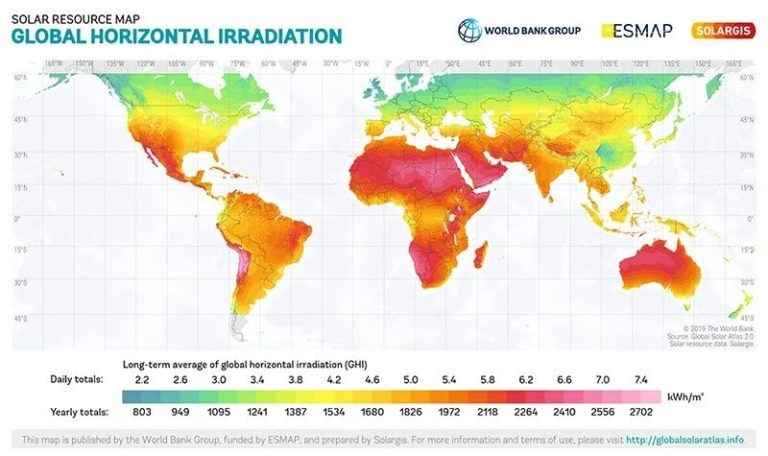What Are Suns Rays?
The sun’s rays refer to the electromagnetic radiation emitted by the sun. This includes a broad spectrum of wavelengths ranging from high energy ultraviolet rays to lower energy infrared rays. Electromagnetic radiation is a form of energy that travels in waves. The different types of radiation are categorized by their wavelength and frequency. Sunlight provides the energy that sustains almost all life on Earth. Understanding the sun’s rays is key to appreciating their wide-ranging effects.
What are sun’s rays?
Sun’s rays refer to the electromagnetic radiation emitted by the Sun. This radiation spans a broad spectrum of wavelengths, including radio waves, microwaves, infrared, visible light, ultraviolet, X-rays, and gamma rays. However, only ultraviolet, visible, and infrared rays reach Earth’s surface and atmosphere in significant amounts. These rays allow life on Earth by providing warmth and enabling plant photosynthesis. But they can also have negative effects like sunburn, skin cancer, and eye damage.
Electromagnetic radiation, including visible light, is emitted by the innermost layer of the Sun called the photosphere. This radiation propagates outward in all directions at the speed of light. As the rays travel the 150 million kilometers to Earth, they spread out and cover our entire planet. The spectrum of the radiation is determined by the Sun’s surface temperature of nearly 6,000°C.
Overall, the Sun’s rays deliver enormous amounts of energy to Earth that power our climate system, ocean currents, weather, and all life on our planet. Understanding the nature and effects of solar radiation is key to protecting human health and managing Earth’s energy balance.
Types of Sun’s Rays
The sun emits three main types of rays that reach Earth – ultraviolet rays, visible light rays, and infrared rays.
Ultraviolet Rays
Ultraviolet (UV) rays have shorter wavelengths and higher frequencies than visible light rays. They are classified into three types:
- UVA rays – these penetrate deep into the skin and are associated with skin aging and wrinkling.
- UVB rays – these penetrate less deeply but are the main cause of sunburns and skin cancer.
- UVC rays – these have the shortest wavelength but are absorbed by the ozone layer before reaching Earth.
Visible Light Rays
Visible light rays, as the name suggests, are the only electromagnetic waves from the sun that are visible to the human eye. They allow us to see color. The colors range from violet and blue (shortest wavelengths) to green, yellow, orange, and red (longest wavelengths).
Infrared Rays
Infrared rays have longer wavelengths and lower frequencies than visible light. They transmit heat. Although infrared cannot be seen, it can be felt as heat on the skin.
Ultraviolet Rays
Ultraviolet (UV) rays are invisible rays that are part of the sun’s light spectrum. They have shorter wavelengths and more energy than visible light rays. There are three main types of UV rays:
- UVA rays – Responsible for skin aging, wrinkling, and potentially skin cancer.
- UVB rays – Burn the outer layer of skin and are the main cause of skin cancer.
- UVC rays – Do not reach Earth’s surface as they are absorbed by the ozone layer.
When UV rays reach our skin, they can cause tanning, sunburns, premature aging, and skin cancer. Overexposure to UV radiation is the most preventable risk factor for skin cancer. UV rays can also cause eye problems such as cataracts. The thin ozone layer allows more UVB rays to reach Earth, increasing the risks of health effects.
Small amounts of UV exposure are beneficial, as sunlight exposure allows our skin to produce vitamin D. However, the benefits of moderate UV exposure outweigh the risks in most cases. It’s important to take precautions and protect your skin and eyes from overexposure.
Visible Light Rays
Visible light rays make up the portion of the electromagnetic spectrum that is visible to the human eye. They have wavelengths ranging from about 380 to 700 nanometers. Visible light allows humans and other animals to see color, brightness, and contrast in the world around them. The different wavelengths of visible light correspond to different colors – shorter wavelengths are bluer, while longer wavelengths are redder.
The properties of visible light allow objects to be distinguished by their color. The different wavelengths comprising visible light interact with materials and substances differently, causing them to absorb some wavelengths and reflect or transmit others. The wavelengths that are reflected determine the color we perceive an object to be.
In addition to allowing vision, visible light has other effects on humans. It regulates the body’s circadian rhythm or internal body clock which controls sleep/wake cycles and other physiological processes. Visible light, especially blue wavelengths, can suppress production of the sleep hormone melatonin. Exposure to visible light is also thought to positively impact mood, alertness, and cognition.
Infrared Rays
Infrared rays make up over half of the sun’s rays and have longer wavelengths than visible light. Though our eyes cannot see them, we experience infrared rays in the form of heat. Infrared rays have the following properties and effects:
Properties:
- Longest wavelengths of sunlight, from 700 nanometers to 1 millimeter
- Lower frequency than visible light
- Transmitted, absorbed, or reflected like visible light
Thermal Effects:
- Infrared rays are absorbed by land, water, and air, heating Earth’s surface
- They also heat up objects they strike directly, which is how we feel warmth from the sun
- Infrared heating is known as radiant heating, like the warmth of a fire
Uses:
- Night vision goggles detect infrared rays to enhance vision in the dark
- IR cameras convert infrared radiation into visible light images
- IR heaters make use of infrared rays to provide warmth without hot coils
- IR spectroscopy analyzes the absorption of infrared light to identify materials
Effects on Earth
The sun’s rays have several important effects on the Earth and its inhabitants. Some of the main effects include:
Photosynthesis– Plants use the visible light rays from the sun to produce their own food and energy through the process of photosynthesis. The sun’s rays provide the energy that allows plants to convert carbon dioxide and water into glucose and oxygen.
Vitamin D Production– When ultraviolet rays from the sun reach human skin, they trigger the production of vitamin D, which is essential for bone health and calcium absorption. Without adequate sun exposure, humans are at risk for vitamin D deficiency.
Warmth– Infrared rays emitted by the sun are absorbed by the Earth’s surface, helping to warm the planet. Without the warming effects of the sun’s infrared radiation, the Earth’s average temperature would be about 0°F (-18°C) rather than its present 57°F (14°C).
Dangers
Exposure to the sun’s rays, while providing some health benefits, can also pose risks if not moderated properly. Three main dangers from overexposure to the sun are:
Sunburn
Sunburn is caused by overexposure to UVB rays. It leads to red, painful skin that feels hot to the touch. While usually resolving in a few days, severe sunburns can blister and lead to more chronic skin damage. Repeated sunburns, especially at a young age, significantly increase lifetime skin cancer risk.
Skin Cancer
Both UVA and UVB rays have been implicated in most types of skin cancer. Basal cell carcinoma and squamous cell carcinoma are the most common types, but melanoma is the most dangerous and accounts for most skin cancer deaths. Lifetime sun exposure, sunburns, tanning bed use, fair skin, and other factors increase skin cancer risk.
Eye Damage
UV exposure damages proteins and DNA in the eye over time, contributing to conditions like cataracts, macular degeneration, and pterygium. UV rays can also cause short-term photokeratitis, which is a painful sunburn of the cornea. Wraparound sunglasses that block 99-100% of UVA and UVB rays can help prevent damage.
Blocking Sun’s Rays
There are a few ways to block the sun’s harmful ultraviolet rays from reaching your skin.
Sunscreen
Applying sunscreen is one of the most effective ways to protect your skin from UV rays. Choose a broad spectrum sunscreen with an SPF of at least 30. Be sure to apply enough sunscreen and reapply regularly, especially after swimming or sweating.
Shade
Seeking shade under trees, umbrellas or canopies can provide protection from the sun’s rays. When possible, avoid direct sunlight during peak hours between 10am and 4pm.
UV Protective Clothing
Wearing tightly-woven, loose fitting clothing made with UV blocking fabrics is another good way to shield your skin. Hats, sunglasses and sun gloves also help block UV exposure.
Conclusion
In summary, the sun’s rays consist of ultraviolet rays, visible light rays, and infrared rays. Each type of ray has different wavelengths and effects on Earth. Ultraviolet rays have shorter wavelengths and can damage DNA, leading to sunburns and skin cancer. Visible light rays allow us to see, performing photosynthesis in plants. Infrared rays have longer wavelengths and transfer heat. Understanding the different types of the sun’s rays is important to protect our health, enable plant growth, and regulate Earth’s climate.
The sun produces a broad spectrum of radiation that has both beneficial and harmful effects on Earth. While visible light is essential for vision and photosynthesis, ultraviolet radiation can damage DNA and cause cancer. Infrared radiation helps warm the planet, but an excess can lead to global warming. By being aware of the different types of solar radiation and taking steps to protect ourselves, such as wearing sunscreen, sunglasses, and protective clothing, we can enjoy the benefits of the sun while minimizing risks to human health and the environment.







